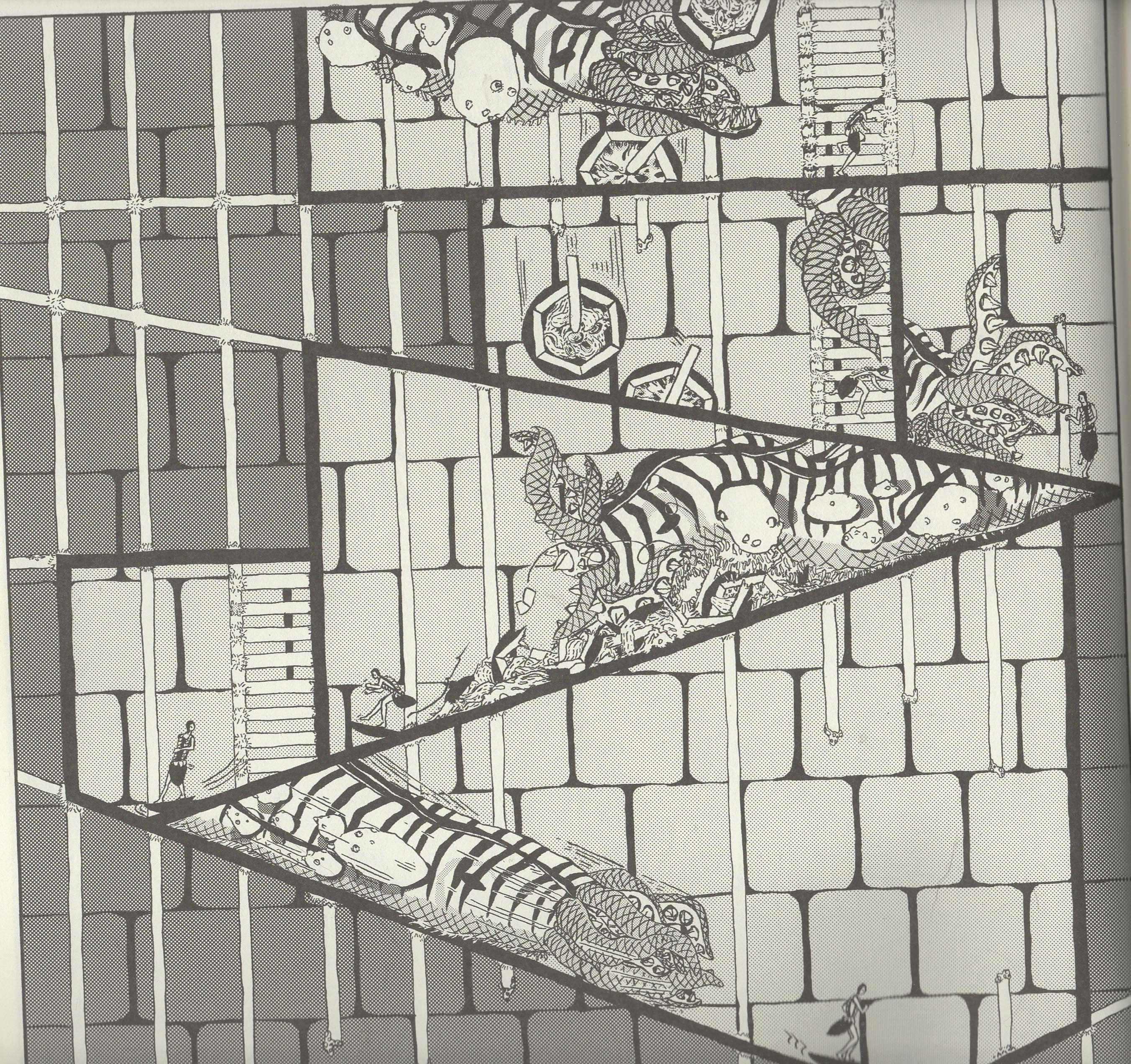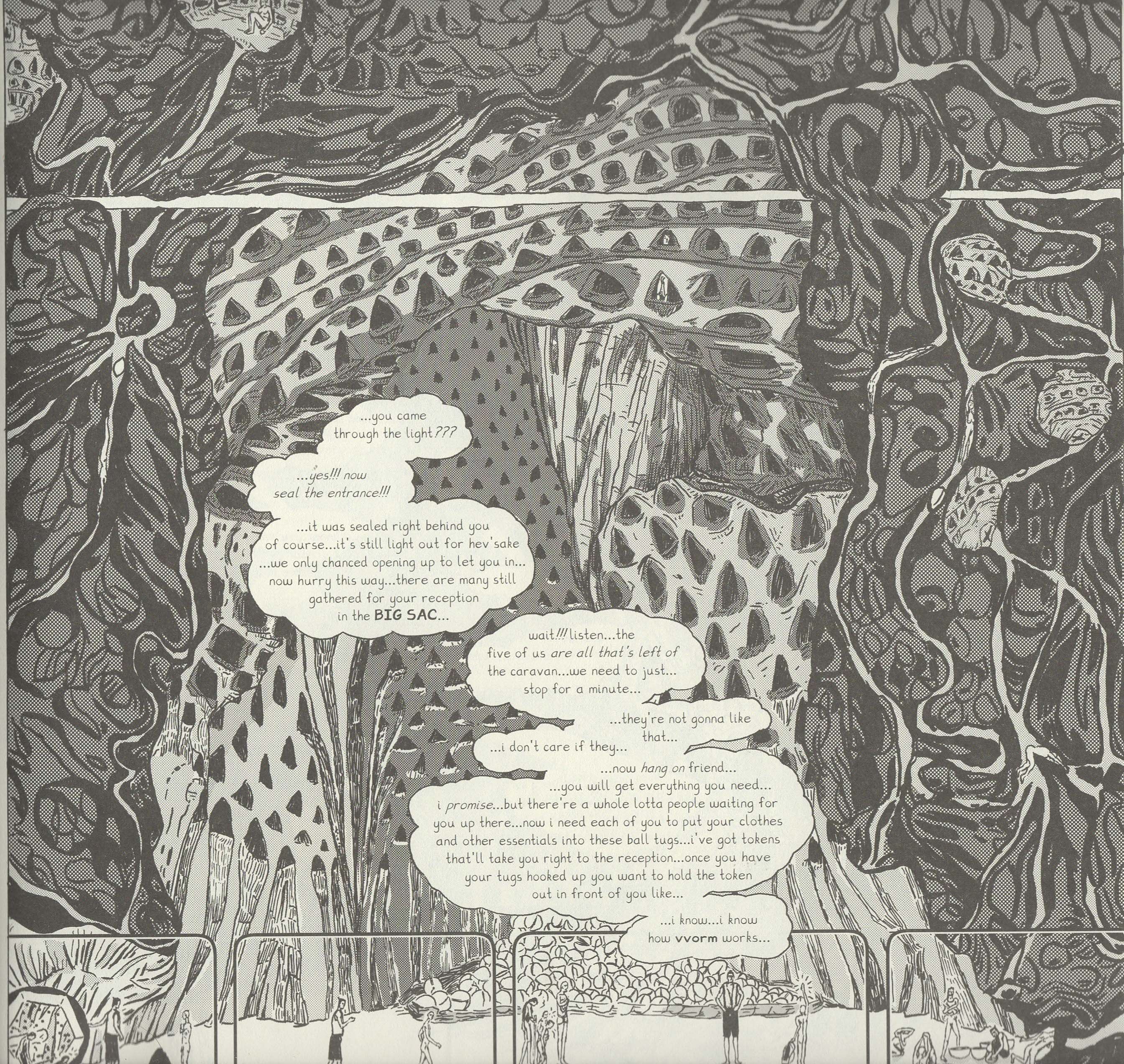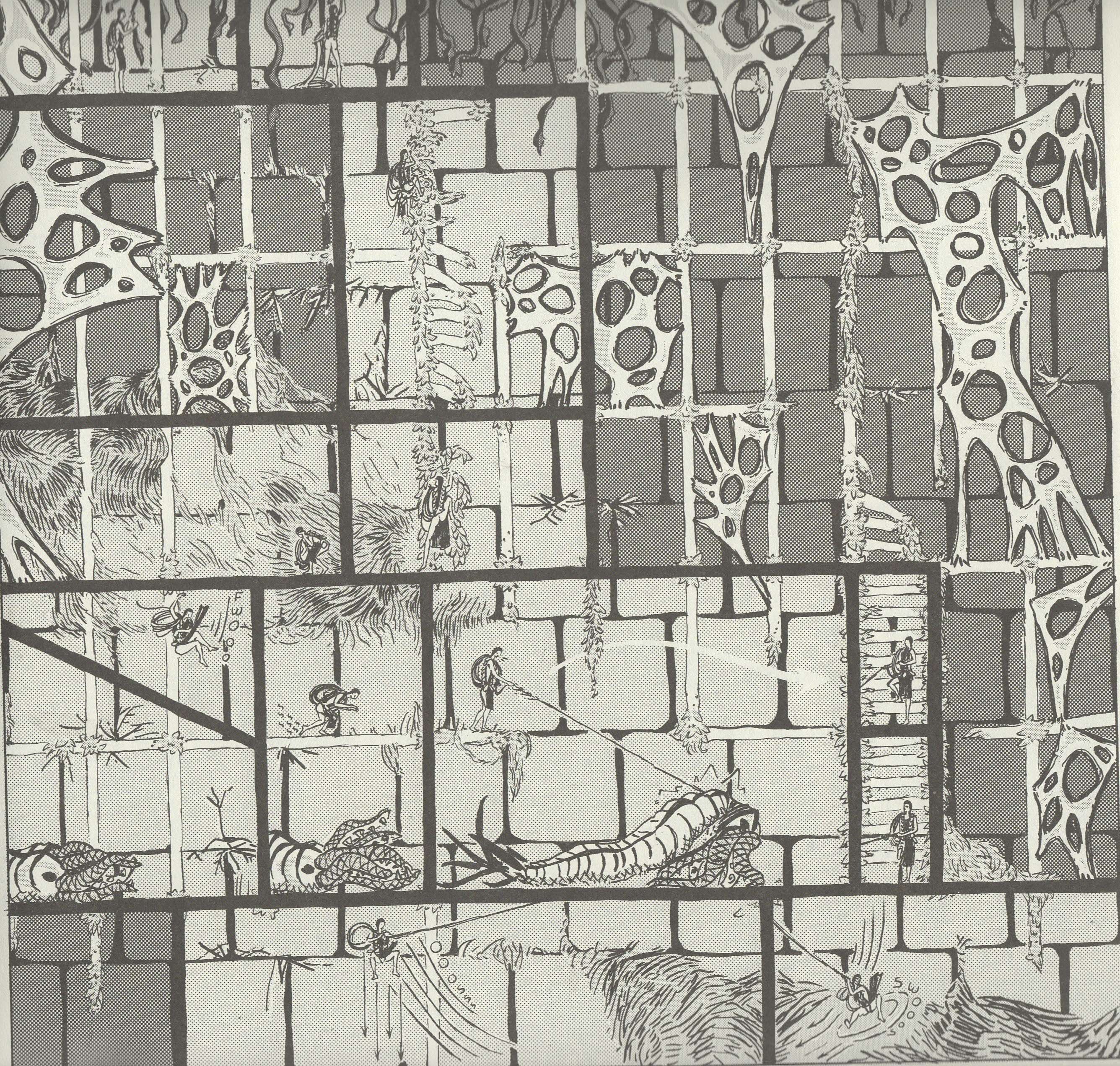"I believed you by the palace gates, now the savage days are here"
Hic and Hoc Publications, a "micropress" (their words), brings us Scaffold, which is by V A Graham and J A Eisenhower. I don't know anything more about those two people - whether they're men or women, who does the writing or art, or if they're space aliens or time travelers. Does it matter? (For the record, Graham is a woman and Eisenhower is a man.) Scaffold is the first volume of a longer book, and it costs $15.
Scaffold is an odd comic, one that works far better as an experiment in style than an actual narrative, which is why I don't like it more than I do. The entire premise is explained on the back cover, which is not a terribly good place to explain things, and while the premise is interesting, the book itself doesn't quite live up to it. What the back cover tells us is that the people of Earth decided to build a giant scaffold reaching into the heavens, where they could live without polluting the planet itself. This is the kind of idea that sounds cool, but if it doesn't have anything backing it up, it becomes too bizarre to deal with. Is this scaffold still rooted to the Earth? It seems like it's not, but where is it, then? The creators give us a "world map" at the end of the book, but it doesn't help too much. Presumably some of the more prosaic aspects of the scaffold will be dealt with in later volumes, but it's a bit odd having read just the one. We get an idea of how the people replenish the scaffold, and that's pretty interesting, but there's a lot missing from this volume.
There's a bit of a plot - a group of people are migrating to "Last City," where it appears they enter a womb-like chamber and regress to a childlike state, but their migration ends in disaster when strange animals - that look like giant caterpillars - attack them. One of their number, a woman named Burru, has climbed down the scaffold from the surface into its depths to find her mother, and when she does, that's the end of this volume. Meanwhile, we also meet a "carrier" - someone who literally carries raw materials to fix the scaffold up from the lowest part - named Keti, who is only a child but seems fairly precocious. These various people come together and break apart, but it all feels like the creators are setting us up for the next volume, as so little happens in this one. I get that you want to introduce plot elements that pay off down the line, but it's frustrating reading this, because it feels like it's all in the service of the next volume, and that makes it a bit boring to read.
It's a shame, because the design of the book is so interesting. Just the idea of living on a scaffold is fascinating, and Graham and Eisenhower do a nice job with showing how the inhabitants navigate their world. The line work is a bit rough - the people in the book are somewhat stiffly drawn, as we see in close-ups that come between each chapter break - but the world they create is impressive. The scaffold dominates the world - only a small amount of the book takes place on the surface, above the scaffold - and Eisenhower and Graham make it beautifully complex, with flowers blooming in places (the scaffold is basically a giant plant) and the lateral supports creating roads for the humans to walk on. A good deal of the book is one-page panels, so the creators move the characters across them by drawing them several times to give us the sense of motion. Despite the organic messiness of the scaffold, it's quite precisely constructed, and it provides a good contrast to the surface, where we get disjointed spires and the strangeness of Last City and its suffocating sensuality. The surface is asymmetrical and dangerous - solid light screeches from the sky and the caterpillars wreak havoc, while the scaffold is more secure - until one of the caterpillars crashes down into it, destroying quite a bit of the infrastructure. Graham and Eisenhower have done a marvelous job creating this world, which is why it's disappointing that the story isn't more compelling.
As an experimental comic, Scaffold is unusual and fascinating. Eisenhower and Graham are examining the way people navigate space and the way space is used in an actual comic, and that's a worthy experiment. Experimental comics, however, can only take you so far, and while $15 isn't much, it's frustrating that the actual narrative isn't stronger, as it would make the experimental aspects of the book more worthy of the price. I can't unreservedly recommend Scaffold, but if you are looking for a comic that is more about the way the story is told rather than the actual story, it's pretty neat. Maybe the next volume will be better!
Rating: ★ ★ ★ ★ ★ ★ ☆ ☆ ☆ ☆





